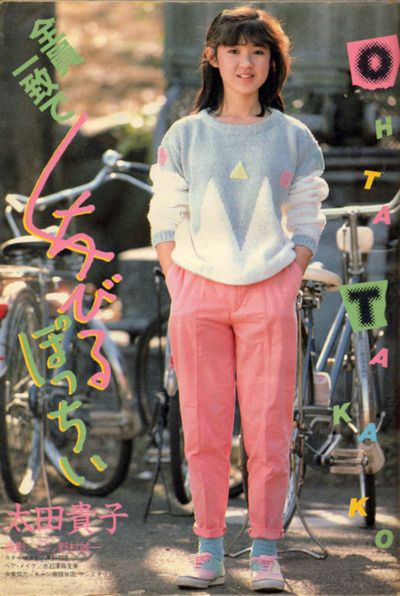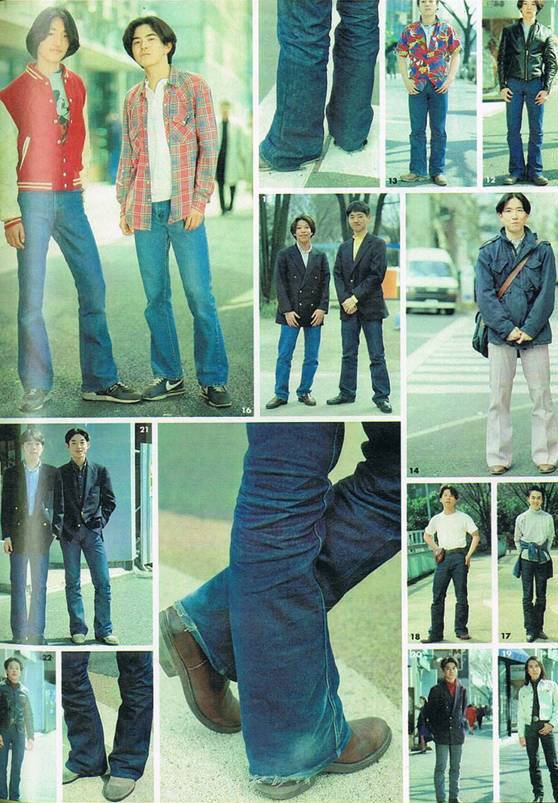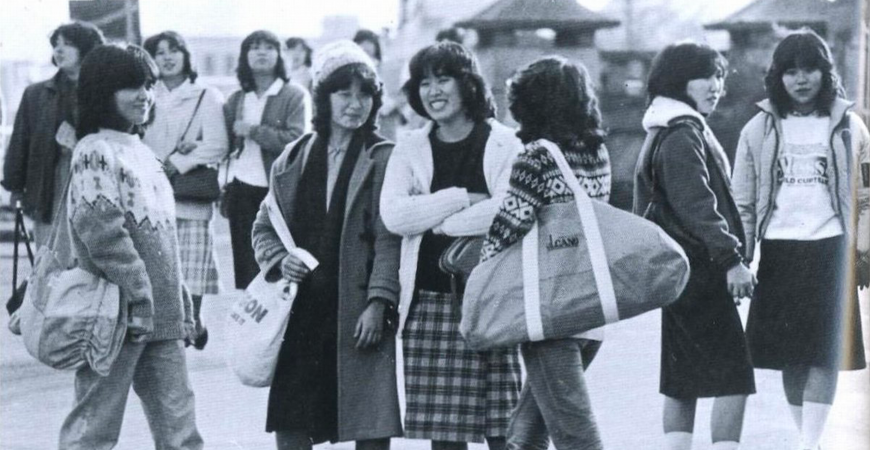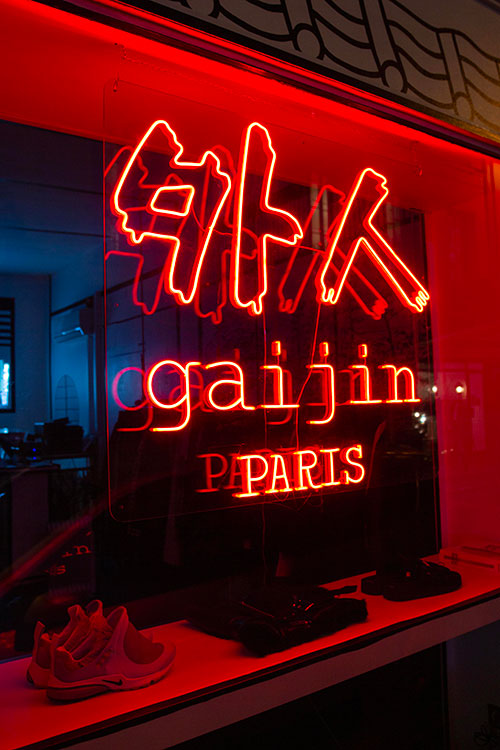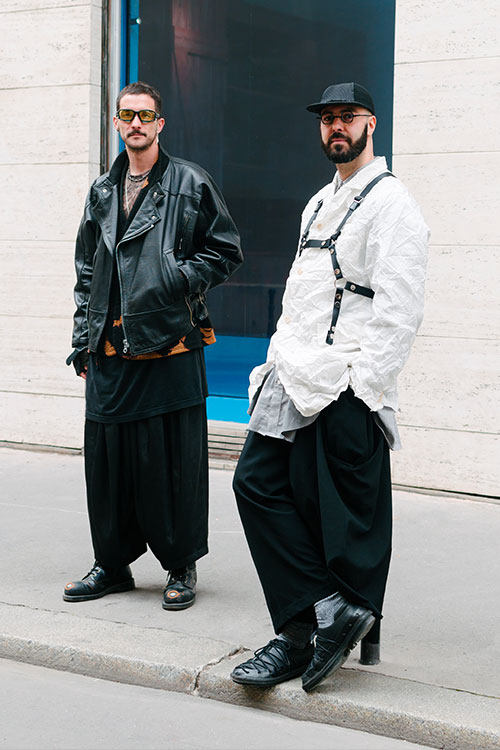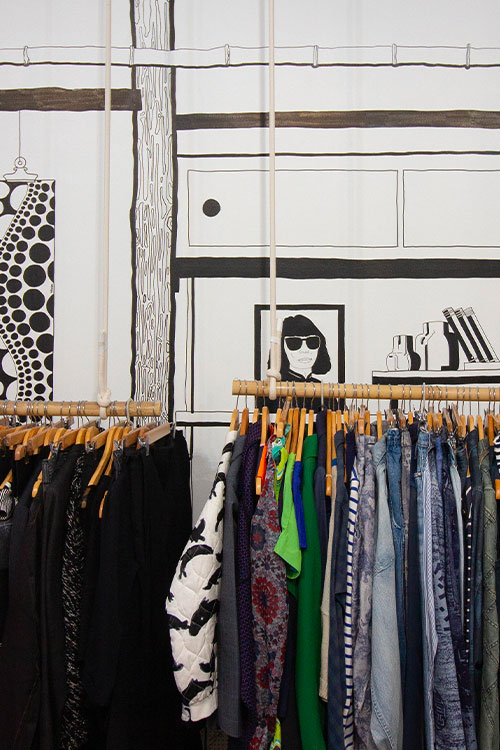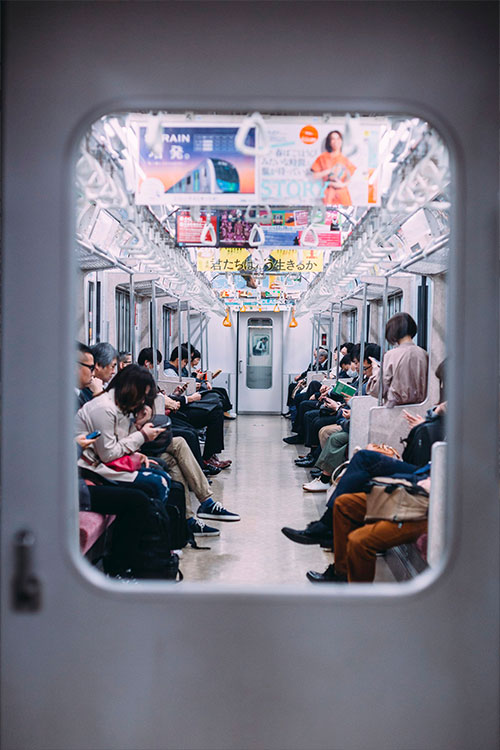Chapter 2: 80s | A history of culture and fashion on the streets of Tokyo.
Chapter 2 : 80s
Did you like our first article, attempting to paint a picture of the streets of Tokyo throughout the 50s, 60s and 70s?
Here is the sequel, with a period rich in cultural developments having affected the style of Tokyoites, who still bear the stigmata today. Wherever you look, in the streets of Tokyo, these unusual styles to our Western eyes are revealed. Young people in particular display very different styles, in a way that is often far from being considered common. The Harajuku district is a perfect example, for its creative and colorful fashion, full of life and developments.
The 80s are a time that seems both near and far away. A decade which gave rise - in Japan as elsewhere - to immense and rapid upheavals, driven by a flourishing economy, whether in lifestyles, architecture, fashion, beliefs... They are found everywhere throughout the world , in all countries that suffered the post-war period and experienced the economic boom.
In the first half of the 1980s, with the consumer society as a backdrop, an admiration for the “mature” way of life developed in youth, as evidenced by the nyutora (new traditional), the hamatora (traditional Yokohama) and “preppy” styles, already present since the end of the 70s (see CHAPTER 1). They are taken up by magazines such as JJ and POPEYE, which model the lifestyle of American university students. The latter have left undeniable and indelible traces since the post-war period, contributing in particular to the development of “sukajans” or “souvenir jackets” or denim, which will have a new boom in this decade (we will talk about them soon, in a new article).
In the mid-1980s, youth stood out especially with a counterculture which would constitute the very essence of modern style in Japan. The young Japanese generation is increasingly interested in brands and other local creators. It starts with the boom of the “DC brand”: “designer” brands and “character” brands are flourishing.
A “Designer brand” is a brand whose identity is based on the personality of the creator behind the brand, like Jean-Paul Gaultier in France. The founder of the brand is also the creator and designs the models. A “Character brand” is a brand that conveys an identity based on a style, like Chloé or Céline, for example. Several stylists design for the brand while retaining its spirit.
In Japan, we speak of “DC burando” for any brand bearing a badge or other creative concept clearly identifying it. Modern and innovative fashion exploded for the first time since the post-war period, ceasing to be based on imitations of foreign fashion or the purest Japanese tradition. It is aimed at a clientele of informed amateurs, ready to pay the price for clothes that suit them, far from Parisian, Italian fashion or other less creative Japanese brands.
Japanese designers like Kenzo Takada, Issey Miyake and Kansai Yamamoto played an active role on the international fashion scene and were showered with praise by the press. But it was above all the houses of Comme des Garçons and Yohji Yamamoto, which enjoyed cult popularity, with styles in dark colors. For them, it was not a question of expressing social class through luxurious creations, but of making an impression, proposing a new attitude towards clothing. These are conventions - especially Western - on beauty, the construction of a garment and many others, denounced one by one. Comme des Garçons, a house founded by Rei Kawakubo, for example, began with 5 people, who made the clothes by hand or entrusted the making, under their watchful eye, to very small factories. The quantities were tiny, the methods artisanal. Always at the forefront, research is at the center of the house's work. Clothes with asymmetrical and unstructured cuts, a radical and innovative creation, which still influence renowned stylists like John Galliano, Marc Jacobs and Phoebe Philo today. “Hiroshima Chic” was long used to describe the style of the artist-fashion designer Yohji Yamamoto, protagonist of the deconstructionist movement. Ready-to-wear becomes a vagrant, black often dominates, the garment is disintegrated, the construction called into question, its lasting or perishable side questioned. Textures and materials are at the center, mixing traditional techniques with new techniques. The relationship between clothes and the body was very different from that of the French among these designers.
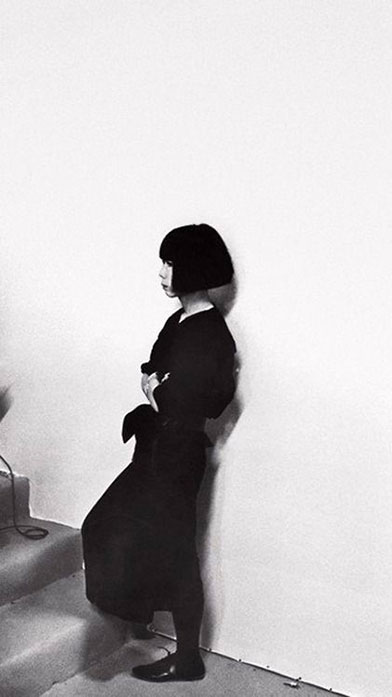
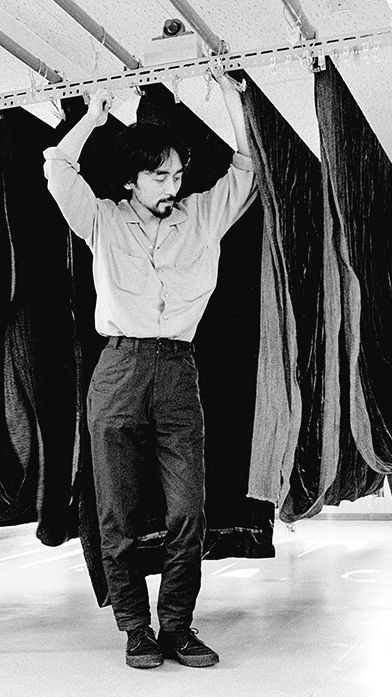
At the beginning of the 1980s, the two houses showed in Paris and success took hold, little by little, in the West. The French press is crazy about Yojhi Yamomoto and Comme des Garçons; it will in turn inspire Japanese magazines, thus making them popular in Japan too.
The strategy of the DC brand was to develop its own network of franchised stores, in order to control their image, from the creation process to the decoration of the stores, to have a recognizable and uniform universe, accentuating their message and the engagement of their customers. The DC brands have even begun to recruit among their aficionados, to make them salespeople and models, the best ambassadors of the brand. A revolution at the time.
The Shinjinrui (post-baby boom) generation, rocked by economic growth, will be the best ambassadors for these DC brands. In the streets, for example, we speak of “karasu-zoku” (“crow tribe” or “crow tribe”) for these women who dress in black from head to toe. This is the beginning of the heyday of DC brands.
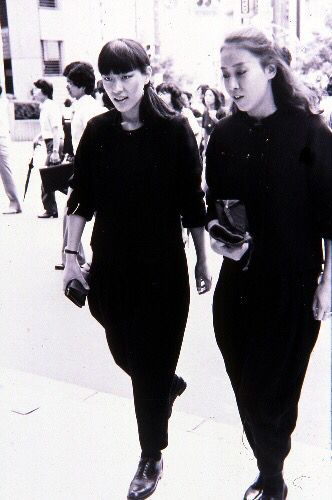
Preppy “Japanese Preppy” fashion is also all the rage, especially among people in their twenties, spawning numerous publications, such as Cheap Chic (Shoshisha editions) and The Official Preppy Handbook (Kodansha). Fashion is beginning to be seen as an integral part of lifestyle and everyday life.
The “New Wave” or “New Wave” movement is also very popular in Japan, for music and for fashion, which reflects its very essence.
It was also the beginning of “kawaii” fashion for girls, promoted by Olive magazine, launched by Magazine House in 1982. Undergraduate and graduate students quickly adopted it. At this stage, we speak of “Olive girls” or “otome” (young girl). The style is characterized by loose, voluminous clothing, with details like big collars, ruffles and ribbons, as well as the colors red, pink and white. The Pink House brand is making its debut and will be very popular with fans of this trend. In the second half of the 80s, Olive became the fashion bible among teenage girls. The Parisian fashion and lifestyle of the time, at least a certain vision of it, is revered. It's the start of a long love story. Handmade and vintage clothing and accessories are firmly anchored in Japanese culture. Examples of “Parisian” style will gradually expand and include oversized silhouettes and ripped jeans.
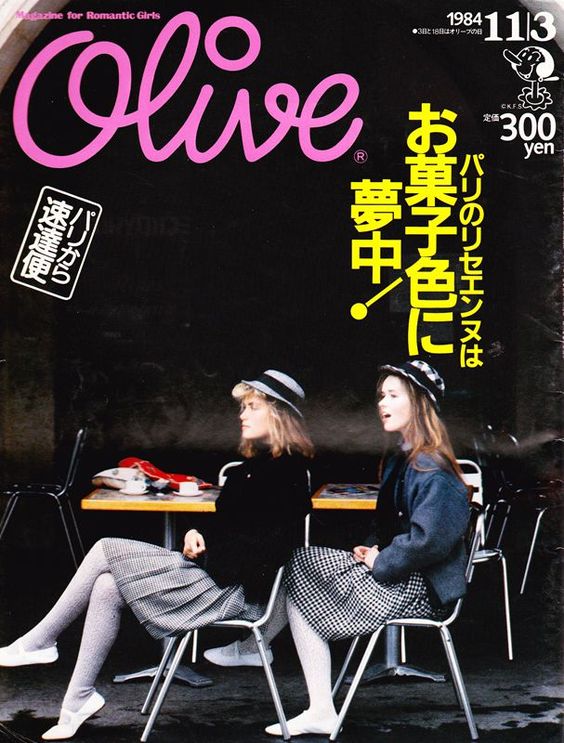
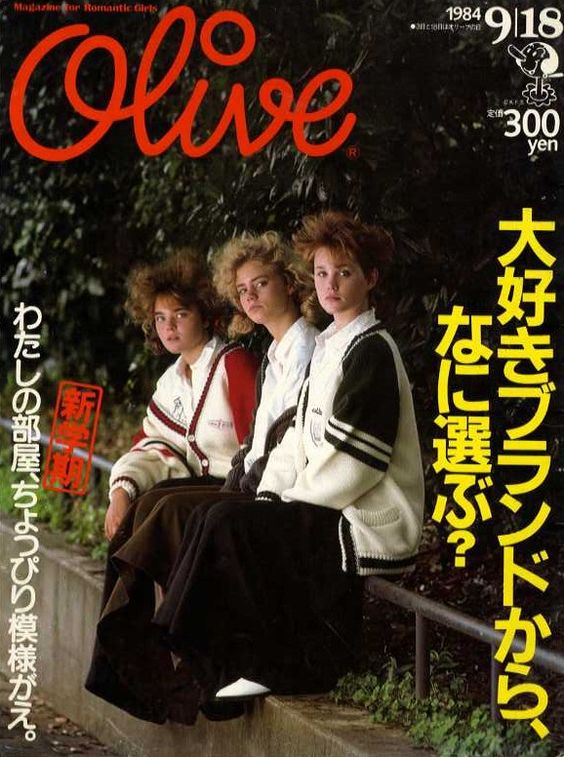

Another movement is born from this cult of the “Parisian style” Japanese version: The “Teenagers in Black”. In the second half of the 1980s, black bombers (often the classic MA-1) paired with denim, flourished on the streets. The Shinjinrui generation is maturing and becoming more casual. It is especially the dankai junior generation (the second generation of the baby boom, the teenagers of the time), who wear this style.
Another movement is born from this cult of the “Parisian style” Japanese version: The “Teenagers in Black”. In the second half of the 1980s, black bombers (often the classic MA-1) paired with denim, flourished on the streets. The Shinjinrui generation is maturing and becoming more casual. It is especially the dankai junior generation (the second generation of the baby boom, the teenagers of the time), who wear this style.
Also note, on the men's side, the "Character Fashion" and "Chekkers" movement inspired by pop stars like Seiko Matsuda or groups like the Checkers, from head to toe. We even talk about the “Seiko Chan” haircut. Checks, shirts, jackets and wide pants, very “new wave” cuts, young people copy their idols.
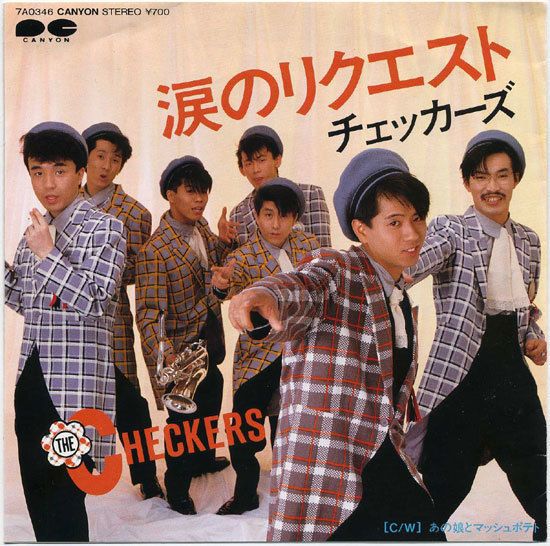
The bodycon style (body consciousness) is also taking over the streets, in reaction to DC brands and Kawaï. A very sophisticated style, full of sex appeal, often characterized by wearing dresses fitted at the top and long haircuts. We also talk about “JJ sophis”, an elegant and sophisticated style, advocated by JJ magazine and developed by local designers like Junko Shimada or symbolized by foreign brands like Chanel and Louis Vuitton.
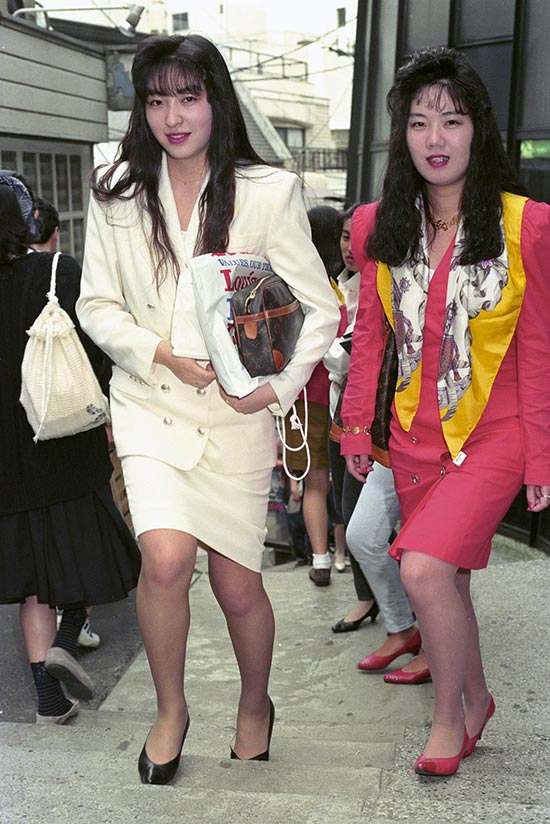
The Shibuya Casual “shibukaji” style is also worth noting. For women, for example: Straight-cut boyfriend-style jeans, a wide plain blouse, a wide blazer in dark tones, sometimes embellished with a scarf, in imitation of actresses from popular series. Denim, cotton, comfortable cuts, but impeccable style.
Towards the end of the 80s, it was above all the sportswear boom that took over the streets of Tokyo with the children of the baby boomers (the “Dankai Junior”), certainly influenced by global Western hits, whose performers do not hesitate to feature themselves in video clips with elements belonging to the world of sportswear. It’s also the beginning of hip-hop influences in Japanese street style…
